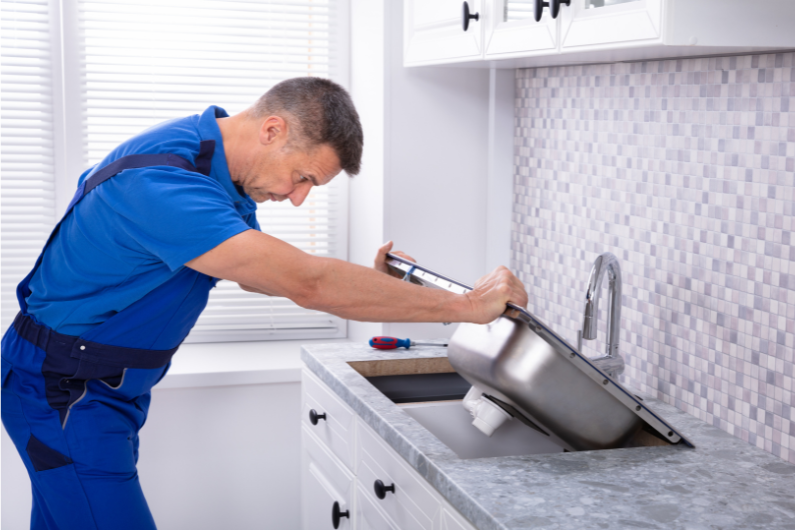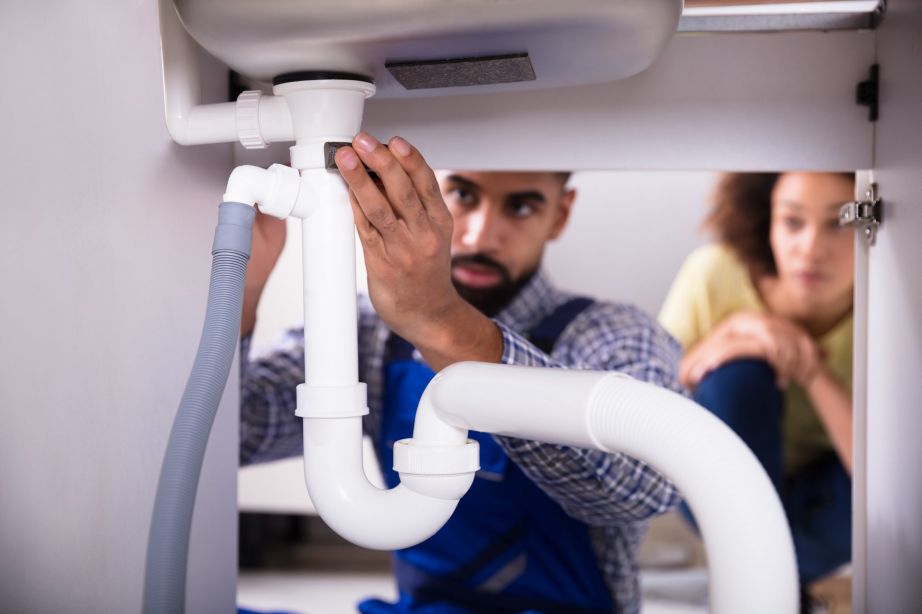Practical Ways To Fix Slow-Draining Sink Problems
Practical Ways To Fix Slow-Draining Sink Problems
Blog Article
We've discovered this article pertaining to Solved! How to Fix a Slow Sink Drain down the page on the internet and concluded it made good sense to quickly share it with you over here.

Introduction
We have actually all existed: You're brushing your teeth or washing your hands, and you see the water pooling in the sink. As opposed to rapidly swirling down the drain, it remains, transforming your once-refreshing morning regimen into a small overload scene. A slow-draining sink isn't simply frustrating; it's frequently an indication of bigger plumbing issues lurking beneath the surface area. The good news is that most slow-draining sinks can be repaired with a little know-how, a few standard tools, and some perseverance. All set to tackle this job head-on? Let's roll up our sleeves and dive right in.
Recognizing the Sources Of a Slow-Draining Sink
Before you begin poking around in your pipelines, it helps to understand what might be causing the stagnation. Understanding the source makes it less complicated to choose the right repair.
Devices and Products You'll Need
The right devices make all the distinction. Luckily, you won't require a totally equipped plumber's van to do the job.
Step-by-Step Overview to Repairing a Slow-Draining Sink
Currently, allow's enter the nitty-gritty. This step-by-step procedure will assist you through easy methods to recover your sink's water drainage.
Step 1: Remove and Clean the Stopper
Commonly, the stopper (that little plug you push down to block water) is the first wrongdoer. Remove it carefully and clean off any hair or gunk entraped around its base. Rinse it thoroughly prior to placing it back in position.
Step 2: Make Use Of a Plunger to Displace Debris
Got that plunger prepared? Placement it over the drain and give it a few firm pumps. The idea is to develop suction that can loosen up any kind of obstruction. If you see little bits of debris floating up, you're on the appropriate track.
Step 3: Try a Drain Serpent or Cord Hanger
If the bettor doesn't do the trick, it's time to bring out the drainpipe snake. Delicately feed it into the drain and twist as you go. You may feel some resistance-- that's most likely the clog. Maintain turning and pulling up until you remove the obstruction. If you do not have a drain snake, a straightened out cable hanger can work in a pinch.
Step 4: Use a DIY Drainpipe Cleanser
An all-natural cleaner made from cooking soda and vinegar can break down residual gunk. Pour half a cup of cooking soda right into the drainpipe, adhered to by half a cup of vinegar. Allow it fizz for around 15 minutes, then flush with warm water. This chemical reaction frequently does wonders for minor clogs.
Step 5: Reconstruct and Check the Sink
Placed every little thing back with each other and run the tap. Does the water now swirl down the drain at a reputable speed? If yes, give on your own a pat on the back. Otherwise, do not misery-- there are still a couple of more tricks up your sleeve.
Essential Devices for Do It Yourself Services
A bettor is your go-to starting factor. A little, sink-sized plunger produces suction that can displace small clogs. For more relentless blockages, a drain serpent (sometimes called a plumbing's auger) functions marvels. A set of handwear covers, a flashlight, and possibly a set of safety goggles are also useful.
Suggested Cleansing Solutions
Moderate meal soap and hot water can assist break down greasy accumulation. A mixture of baking soft drink and vinegar is a time-tested natural remedy, and chemical cleansers offer a more green approach. Keep chemical drain cleansers as a last resort, as they can be severe on your pipes.
Common Offenders Behind Slow Drain
So, what's blocking points up? Commonly, it's a combination of day-to-day particles-- believe hair, soap scum, tooth paste residue, and remaining food fragments. Gradually, these little bits collect and hold on to the pipeline walls, gradually narrowing the flow and making it harder for water to pass through. In some cases, natural resource from hard water can likewise contribute to the gunk, developing the best tornado for persistent obstructions.
When is it Time to Act?
If you discover the water draining pipes slower than typical, it's an excellent concept to intervene faster rather than later on. Waiting too long might bring about complete blockages, undesirable odors, and even pipeline damages. If the water takes greater than a couple of secs to clear out after switching off the faucet, consider it a red flag and get ready to put on your DIY hat.
Safety First: Safety Measures and Preparations
Before you launch into unclogging setting, think of safety and security. You're dealing with possibly filthy water and debris, so slip on a pair of handwear covers. If you're using chemical cleaners, ensure the area is well-ventilated and adhere to the directions on the tag.
Protective Gear and Work Area Arrangement
Lay down some old towels or dustcloths around the sink location to catch splashes. Eliminate any type of things that may enter your method, like soap dispensers or toothbrush owners. Make sure you have excellent lights-- get a flashlight if required.
Alternate Approaches for Stubborn Clogs
Not all clogs are produced equivalent. If your sink still declines to cooperate, take into consideration these alternative services.
Sodium Bicarbonate and Vinegar Approach
We currently discussed this, yet it's worth noting again. This gentle, eco-friendly method is much safer than chemical cleansers and typically fairly effective.
Enzymatic Drain Cleansers
Enzyme-based cleansers utilize natural microorganisms to absorb organic matter. They're an outstanding selection if you're aiming to stay clear of rough chemicals. Just remember, they may take a bit longer to function their magic.
Chemical Drain Cleaners: Benefits And Drawbacks
Chemical cleansers can blow up via tough obstructions fast, however they're not without disadvantages. They can create warm and fumes, damage pipes if utilized excessively, and pose environmental threats. Use them moderately, and constantly adhere to the instructions meticulously.
Preventive Measures to Maintain Your Sink Flowing
Avoidance is the best cure. By adopting a couple of easy behaviors, you can keep your sink from reducing to begin with.
Regular Cleaning Practices
Clean down the sink container and fixture area regularly. Remove hair or food bits before they have a possibility to wash down the drain.
Preventing Dangerous Materials Away
Reconsider before dumping coffee premises, oil, or coarse veggie scraps down the sink. These culprits hold on to pipeline wall surfaces, developing obstructions over time.
Regular Upkeep Checks
Schedule a quick regular monthly assessment. Run warm water via the sink for a couple of mins, paying attention to the flow. If it seems sluggish, act fast before it becomes a full-on obstruction.
When to Call a Specialist Plumber
Sometimes, no matter just how tough you try, that clog simply will not budge. That's when it's time to bring in the pros.
Signs That Show an Extra Severe Issue
If your sink drains pipes slowly in spite of numerous attempts, or if you observe water supporting in various other components (like your shower or commode), you might have an extra serious pipes concern prowling much deeper in the system.
Stabilizing Do It Yourself Efforts with Expert Help
While DIY can conserve you cash and use a sense of accomplishment, there's no embarassment in calling a specialist. A specialist plumber can analyze your whole pipes configuration, ensuring there's no underlying damages or long-term trouble that might cost you more down the road.
Comparing Costs and Long-Term Solutions
Before deciding, consider the big picture. A low-cost, quick fix may fix the issue momentarily, however purchasing a much more long-term option can conserve you money and anxiety over time.
Weighing the Expenses of Do It Yourself vs. Specialist Repairs
DIY solutions usually set you back little more than the rate of a bettor or a container of cooking soft drink. Specialist services, on the other hand, included a price but may prevent repeated concerns and costly repair work later.
Investing in Top Quality Fixtures and Upgrades
If your sink's layout contributes to frequent blockages, it may be worth upgrading to higher-quality components or changing the pipes design. Consider this a financial investment in your home's capability and convenience.
Final thought
A slow-draining sink can seem like a small irritation, however it's typically an indicator that your pipes needs a little TLC. By comprehending the origin, using the right tools and techniques, and devoting to simple safety nets, you can maintain your sink flowing openly. And when all else fails, never think twice to contact a professional-- your home's plumbing is worth the investment in care and maintenance.
Three Common Ways to Fix a Slow Drain
Baking Soda Method
Boil a full pot of water. Measure out cup of baking soda and pour it down the drain. Then take cup of the magical cleansing substance known as white vinegar and drop that down there too. Allow the mixture to fizz in the drain for five minutes as the vinegar and baking soda combine. Now dump in that whole pot of boiling water. This combination of cleaning substances should clear out anything that is causing your sink to drain slowly. If it doesn t...
Zip-It
If the baking soda method doesn t clear out your drain, it may be because a significant amount of hair and/or other debris has collected there and you need to remove it. Purchase a Zip-It tool at any home improvement or hardware store and insert it into your drain. It will catch any collected hair or debris that s blocking the flow of water. Pull it out. If it s got a big clump of hair, etc. on the end, you ve probably got your culprit.
Drain Cleaner
If these methods don t work, there is the standard drain cleaner that you can also buy in a hardware store or even your local grocery store. It s better if you can use a household solution, but these drain cleaners often work in a pinch. They re very simple to use. You generally just dump them in your drain and wait. If even this method is not effective, it may be time to call the plumber.
https://www.mrrooter.com/oneida/about-us/blog/2017/july/three-common-ways-to-fix-a-slow-drain/

Do you really like reading about 4 Tips to Fix a Slow Draining Sink? Give a remark further down. We'd be happy to listen to your ideas about this entry. Hoping to see you back again in the future. Sharing is caring. Helping others is fun. Thanks a lot for your time invested reading it.
Schedule And Pricing Report this page